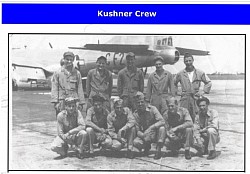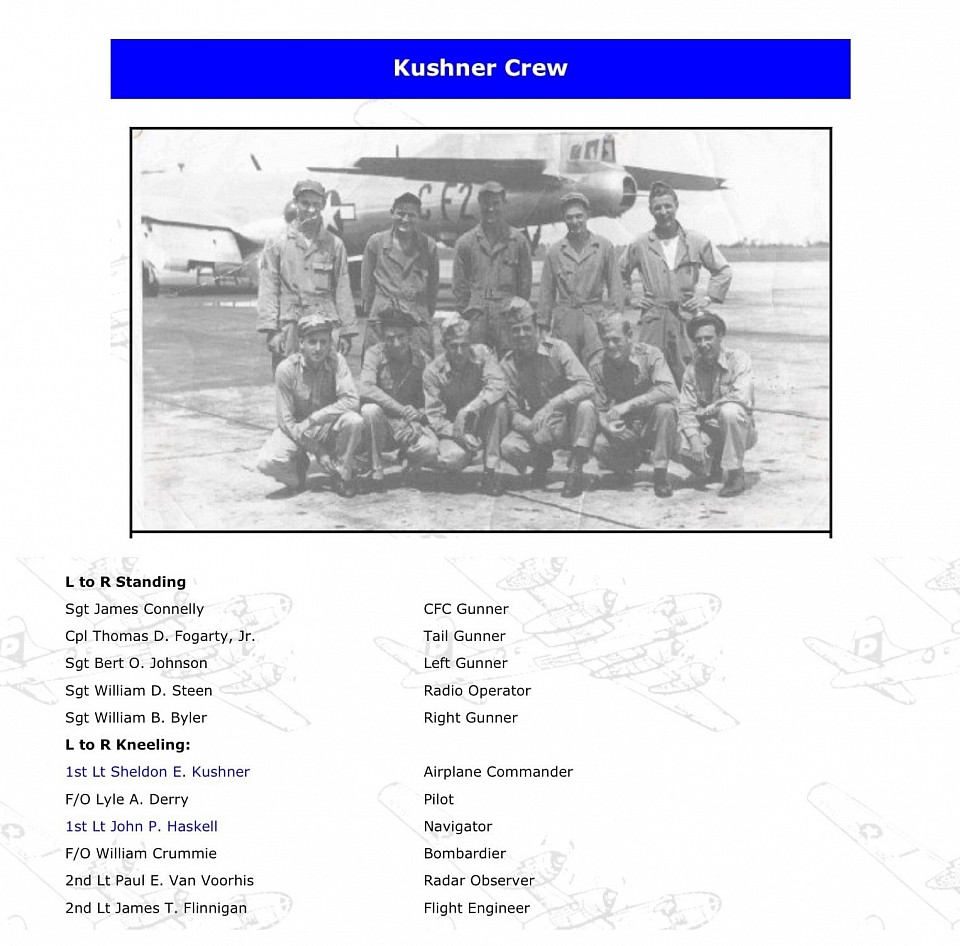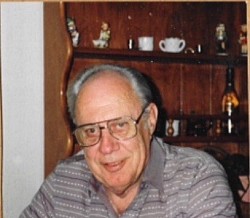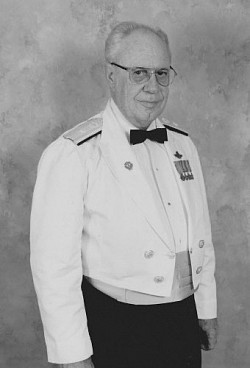Jim, the Pilot!
Flight engineer James Finnigan sat at his station on the B29 “Superfortress,” one of the iconic World War II planes, listening to the roar of the engines, scanning and rescanning the instruments. The Engineer station facing the back of the plane... The FE and Pilot were back to back.... the pilot controlled the plane and the FE controlled the engines. When the pilot called for "climb To 15000" FE adjusted the throttle and mixture for climb and again when reaching altitude to level flight.
It was August 6, 1945. Technology has evolved, making the flight engineer no longer needed. But at that time the flight engineer’s responsibilities were numerous, even overwhelming. Manage and monitor the engines and also the fuel systems. Add in the hydraulic systems, the electrical systems (gotta have lights when you need them), and the environmental controls. Dizzying, unless, like James, you know the controls like you know those in your longtime car. He had to monitor the instrument displays, the gauges, and indicators. If an emergency arose (and what an emergency that would be on a flight almost as historic as the first moon flight) responsibility fell on James above all to save the occasion.
Think about what the Army considers when selecting from candidates for the mission James was on as he flew his escort plane for the Enola Gay over the Pacific toward the target.
Courage, for one thing. You cannot assign a man to a dangerous, life-threatening mission without knowing that he has the courage to follow through with his assignment. An enforcer of the highest order, James, above all, could stand up to adversaries of any ilk – a neighborhood bully who attacked his little brother, the militarist nation of Japan whose attack had inspired him to enlist in the Army Air Corps., and from the time his mother died when he was 13, his father who sometimes wanted to go too far in disciplining his 6 younger siblings.
Take the case of the bully. The Finnigan boys were very close and protective of each other. An early-grammar-school Paul generally walked home with the rest of the family, but on occasion and against Dad's orders, Paul walked home alone. The "Finnigan path" cut across a large field full of tall summer weeds. George Eggloff, the bully in Paul's class, lived near the path and, seeing Paul walking alone, hid along the path, jumped out, and beat him up. Paul told his brothers about the ambush. And, led by James as always, they came up with a plan. The next day thebrothers walked ahead of Paul and hid along the path. When George saw Paul alone again and ran to hide, the boys took out old Georgee Porgee. The word spread around school quickly... don't mess with any of the Finnigan boys.
What other qualities got the young man selected for his position? High performance, for another. James lived and breathed aviation. As a child he built model airplanes, and, when he didn’t get enough excitement from simply flying them out of the upstairs widow at 499 Roycroft, he would light them on fire and surprise drivers going past. After Pearl Harbor he joined the Army Air Corp and spent WWII flying B29s sorties from the island of Guam. With the attack on Pearl Harbor Jim enlisted in the Army Air Corp, qualified for flight training and earned Pilot type ratings in single and multi-engine aircraft. Jim was promoted to Lieutenant and assigned to a squadron based on Guam where he spent three years on active duty flying B29s. He knew his planes, and he knew his instruments. As Lieutenant he was the engineer responsible for keeping the engines humming on the B29, and there was no one better to do it.
Leadership. The oldest, Jim was the acknowledged and never-challenged leader of the members of that “Finnigan Gang.” Jim was 13 when Mother died and Jim was the closest to Mother and that bore the brunt of the family’s pain dealing with her death. He was devastated but took charge and was family leader when Dad was at work. He protected the family from housekeepers, teachers, and Dad! Jim was angry about Mother's death and the anger gave him the strength to do what had to be done. He didn't ask anybody to do things, he told them what to do. He showed a lot of love and led with a smile but could show a temper, didn't hesitate to scold or punish anyone who disappointed him. No one ever challenged Jim... never!
James’s leadership, and his protecting his brothers and sister, lasted throughout his life. Dad placed a lot of responsibility on him with regard to managing the family, cooking, cleaning, babysitting the younger 3, etc, etc. When Jim left for the military he wrote weekly letters addressed to Dad but always starting with "Hi you all!" And Dad always read Jim's letters to the family. Jim frequently sent post cards addressed to each of the kids. Jim visited Mother's grave often (we often went with him). After Dad died Jim arranged to have the headstone made for Mother and Shelia to replace the grave number which it had since burial.
Here Paul recollects his big brother.
“When I [Paul] got my private pilot license, I called Jim, who was delighted but said "if you're going to fly, you need an instrument rating... it will save your life! Get one, that's an order!"
“At 48, I was told by the flight school said it was unlikely that I could pass the FAA proficiency test. I told them, "watch me!" And a couple months later I took the instrument test in total overcast starting from Monterey airport and making ILS, VOR and ADF approaches to minimums at San Jose, Salinas and Monterey, passing with a perfect score and was awarded an Instrument rating.
“A year later, taking off from San Diego in Instrument conditions, Mission Bay approach radioed collision avoidance instructions relating to a plane they had lost contact with and required immediate changes of direction, altitude and airspeed... I never skipped a beat in following the instructions and made a safe trip over the LA basin to San Jose.
“Jim was absolutely correct, it saved my life!”
As the oldest, James often was the harbinger of change coming in the family order. He was also, as previously implied, fearless. Here is Paul reflecting on such a change, driven by none other than the mighty Jim.
“I remember what may have been a turning point in Dad's family control. I was standing at the door to the boys bedroom when Dad and Jim were having an argument. JIm decided to leave the room and Dad tried to stop him. Dad landed on the floor looking up at Jim who was much taller and stronger. I think Dad had a come-to-Jesus moment realizing that Jim, Jerry, and Bob were no longer boys but were becoming grown men, and Denny was right behind them. Dad needed them 24/7 more than ever with Kathleen, John, and Paul needing constant supervision and care.”
James, then, sitting in the cockpit of that B29 Bomber with Sleepy of the Seven Dwarfs painted on the nose, James was a complete triumph for his father, a leader of men, a force changing the course of human history. He was handsome, too, having inherited Mother's good looks more than rest of the family except for John who was a close 2nd. (Notes Paul, “The rest of us looked like Dad, sharp nose, chin and hairline.”
Jim escorted the Enola Gay successfully on its mission, flew off as instructed when the bomb was dropped, and felt the aftershock from the first atomic bomb ever used in warfare.
Jim and his crew flew escort for the Enola Gay on its way to Hiroshima and were circling Tokyo harbor when the Japanese signed the surrender and ended WWII.
An acknowledged leader, and a war hero, Jim was reassigned to Lackland AFB in San Antonio, where he became Flight Safety Officer. During the Korean War Jim became an Advisor the Royal Korean Airforce and subsequently served as Flight Safety Officer at Elmendorf Air Force base in Anchorage.
His life, too, had its dark moments. Back at Lackland, Jim and Betty and their daughter Timi were enjoying life when tragedy struck. A prisoner escaped from a local jail, stole a police car found parked and running outside the jail and began a chase toward downtown. The car took an off ramp at high speed where Betty was the last of several cars stopped due to traffic, causing a fatal collision. Betty, who at age 54 had recently met with and was honored by President Jimmy Carter for her work in creating and promoting a national Foster Grandparents Program, did not survive.
Jim’s loss of his mother was helpful in dealing with the loss of his wife. Jim retired from the USAF and joined the U.S. Coast Guard where he was active the rest of his life.
In the case of James, the number one son, there was no question that Charles succeeded. The young man was exemplary and it is no exaggeration to say his achievements contributed to saving the country and changing the course of history.
But, truly, was he not a one-off? Could Charlie or anyone possibly replicate how Dad inspired James with any of those other bereft children blindly feeling their way through life without a mother? Jerry, for instance, who had to deal, among other things, with growing up in the shadow of his older brother, James. Could he do enough Charles Atlas bodybuilding, enough excessive spending, to salve his wounds and enable him, like James, to become a leader and truly a force?
[End of Chapter]







